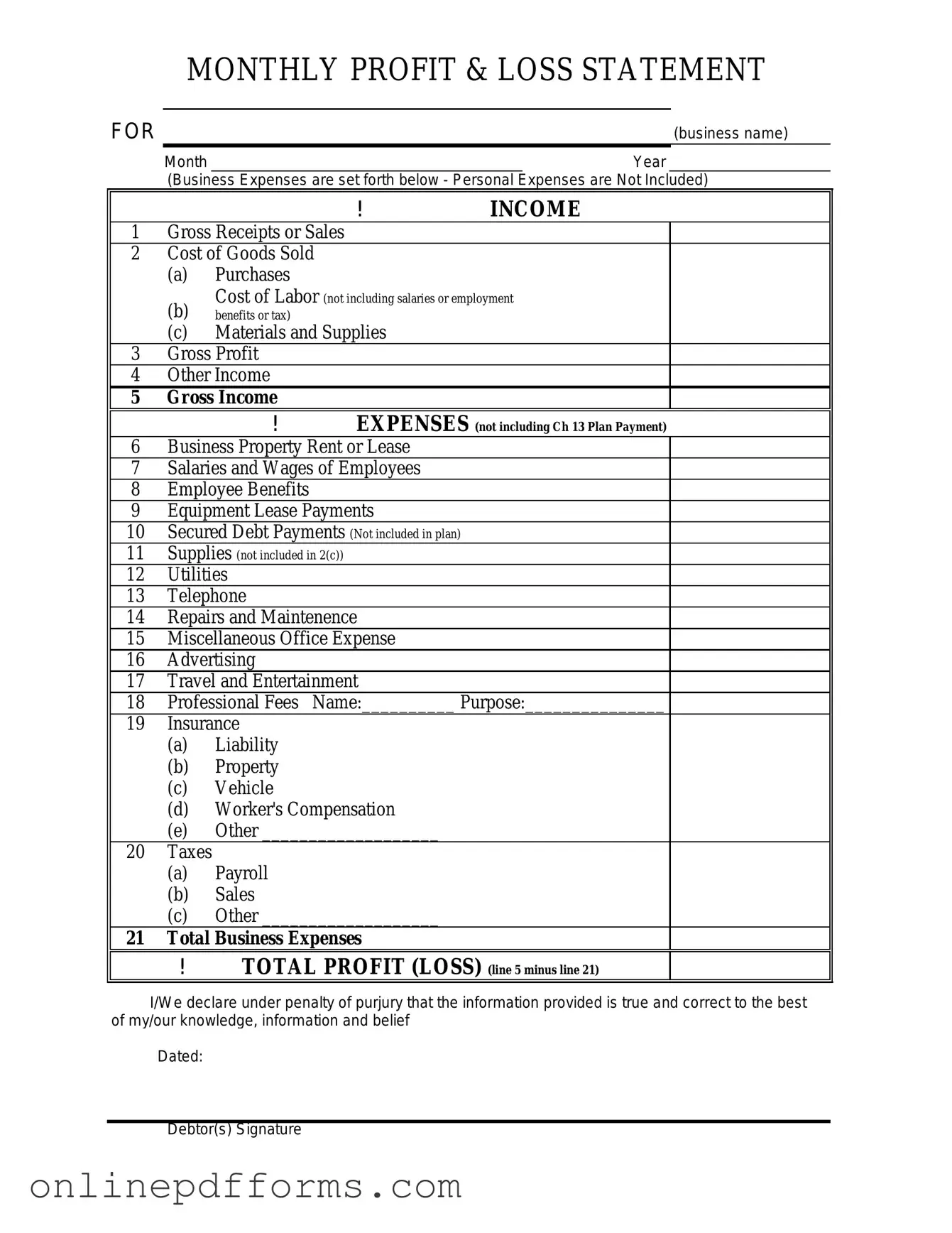The Profit and Loss form, often referred to as the income statement, is crucial for understanding a business's financial performance over a specific period. It shares similarities with the Balance Sheet, which provides a snapshot of a company's assets, liabilities, and equity at a particular moment in time. While the Profit and Loss form focuses on revenue and expenses, the Balance Sheet complements it by showing how those revenues and expenses affect the overall financial position of the business. Together, they give a comprehensive view of financial health.
Another document closely related to the Profit and Loss form is the Cash Flow Statement. This statement details the inflows and outflows of cash within a business during a specific period. While the Profit and Loss form reports on profitability, the Cash Flow Statement highlights liquidity, showing how cash is generated and used. Both documents are essential for assessing a company’s financial stability, but they do so from different perspectives.
The Budget is another document that aligns with the Profit and Loss form. A budget is a financial plan that outlines expected revenues and expenditures over a future period. It serves as a benchmark against which actual performance, as shown in the Profit and Loss form, can be measured. By comparing the two, businesses can evaluate their financial discipline and make necessary adjustments to stay on track.
The Statement of Retained Earnings also bears similarities to the Profit and Loss form. This statement outlines changes in retained earnings over a specific period, detailing how profits or losses from the Profit and Loss form are reinvested in the business or distributed to shareholders. It helps stakeholders understand how profits are utilized, thus providing a broader context for financial decision-making.
The Trial Balance is another important document that relates to the Profit and Loss form. This internal report lists all the balances of the general ledger accounts at a specific point in time. It serves as a preliminary check to ensure that total debits equal total credits before preparing the Profit and Loss form. While the Trial Balance is more of an accounting tool, it lays the groundwork for accurate financial reporting.
The Statement of Comprehensive Income is similar to the Profit and Loss form but includes additional items that affect equity. This document accounts for all income and expenses, including those not typically reported on the Profit and Loss form, such as unrealized gains and losses. It provides a more extensive view of a company’s financial performance, capturing elements that might impact long-term financial health.
Finally, the Financial Forecast is akin to the Profit and Loss form in that it projects future revenues and expenses based on historical data and market trends. While the Profit and Loss form reflects past performance, the Financial Forecast aims to predict future outcomes, helping businesses plan strategically. Both documents are essential for financial planning and decision-making, enabling businesses to set realistic goals and measure progress.
